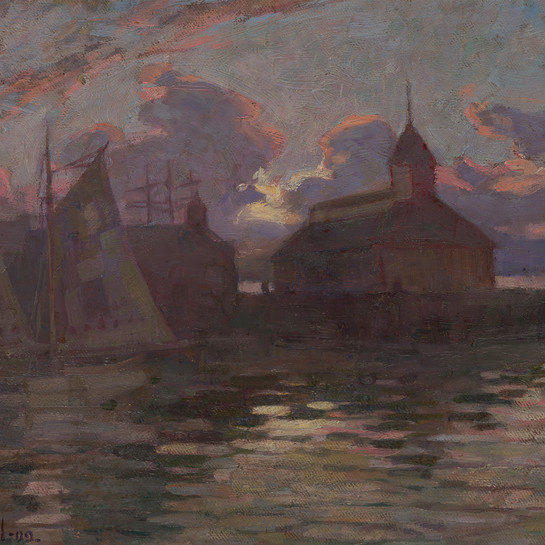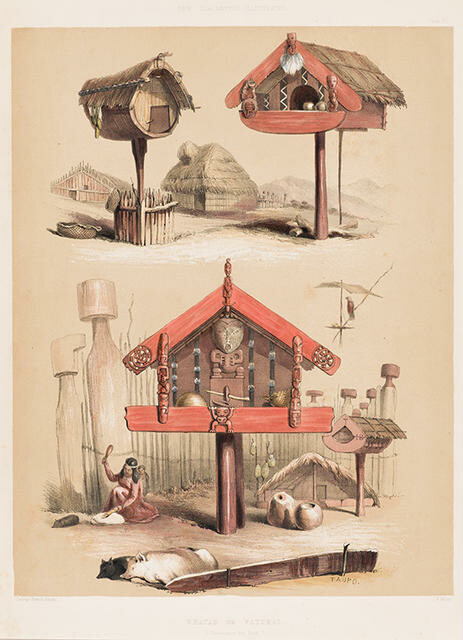George French Angas
England / Australia, b.1822, d.1886
Whatas or Patukas (Storehouses for Food)
- 1847
- Lithograph, hand coloured
- Purchased, 2011
- 541 x 365mm
- 2011/239
Tags: animals, baskets (containers), birds (animals), buildings (structures), carvings (visual works), fences, houses, Māori (culture or style), pātaka, people (agents), pigs, sculpture (visual work), villages
About the artist
George French Angas was an English traveller, artist, natural historian and ethnographer. In 1844, he spent four months exploring Te Ika-a-Māui (the North Island of Aotearoa New Zealand), also visiting Tōtara-nui (Queen Charlotte Sound) at the top of Te Waipounamu (the South Island). Although Angus represented Māori in a sentimental light, he believed in British superiority over indigenous cultures, which places his work within the canon of colonial representation of New Zealand. Pātaka (storehouses) and whata (elevated platforms) were predominantly used for storing food, seeds, tools and other valuables.
I [top left] This smaller pātaka is for housing seeds; a potato store sits behind. The location is a kāika (village) led by rangatira (chief) Te Pahe, in the Ahu Ahu area near New Plymouth. II [top right] The adornment of a structure within Māori custom reflects the status of the individual it was made for. This pātaka painted with red ochre and adorned with carving and feathers belonged to a rangatira from Te Rapa kāika on the shores of Lake Taupō. The mana of this rangatira was such that his food was tapu and needed to be stored separately. III [bottom, centre] The main pātaka in the composition belonged to Hepi Te Heuheu, the seventh paramount rangatira of Ngāti Tūwharetoa. IV [bottom, right] A pātaka of Te Rangihaeata, a rangatira of Ngāti Toa and nephew of Te Rauparaha. V [bottom, left] A woman beats flax with a stone pestle, an early part of the process of preparing flax for weaving. Note the palisade behind her. VI [centre, right] Kākā were popular domestic pets. They could be trained to talk (although not as well as the tūī) and were also used to attract other birds for easy hunting.
(Our Collection: 19th and 20th Century New Zealand Art, 2018)

